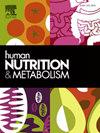代谢综合征对中年肥胖男性脂联素、心踝血管指数和心血管风险的影响:一项横断面研究
IF 1.8
Q3 ENDOCRINOLOGY & METABOLISM
引用次数: 0
摘要
本研究旨在通过使用泰国心血管风险评分(TCVRS)评估脂联素水平、心踝血管指数(CAVI)和动脉粥样硬化性心血管疾病的10年风险,确定代谢综合征(MetS)对肥胖男性心血管疾病(CVD)风险的影响,并评估CAVI和脂联素是否可以作为CVD的预测指标。在82名中年肥胖男性中,70.7%患有MetS, 56.1%患有低脂联素血症,20.7%被归类为高CAVI (>8), 15.9%被认为是高危心血管疾病(TCVRS≥20%)。与非MetS组相比,MetS组的参与者有更高的心血管疾病风险,TCVRS显著升高,脂联素显著降低,尽管CAVI没有显著差异。在MetS组分中,高甘油三酯和低hdl -胆固醇水平影响脂联素水平,而高空腹血糖水平影响CAVI值,Spearman相关分析支持这一观点。此外,CAVI与TCVRS呈正相关,并且在total组和MetS组中被确定为CVD风险的独立预测因子。相反,脂联素表现出负相关,是非mets组的独立预测因子。重要的是,亚组分析表明,与CAVI水平正常的参与者相比,CAVI较高的参与者有更大的心血管疾病风险。值得注意的是,没有低脂联素血症的高CAVI参与者表现出最高的TCVRS,超过一半的人被归类为心血管高危人群。本文章由计算机程序翻译,如有差异,请以英文原文为准。

Impact of metabolic syndrome on adiponectin, cardio-ankle vascular index, and cardiovascular risk in middle-aged obese men: A cross-sectional study
This study aimed to determine the impact of metabolic syndrome (MetS) on cardiovascular disease (CVD) risk in obese men by assessing adiponectin levels, cardio-ankle vascular index (CAVI), and the 10-year risk of atherosclerotic cardiovascular disease using the Thai cardiovascular risk score (TCVRS), and evaluated whether CAVI and adiponectin could serve as predictors for CVD. Among 82 middle-aged obese men, 70.7 % had MetS, 56.1 % had hypoadiponectinemia, 20.7 % were classified as having a high CAVI (>8), and 15.9 % were considered at high cardiovascular risk (TCVRS ≥20 %). Participants in the MetS group had a higher CVD risk, as evidenced by significantly higher TCVRS and lower adiponectin compared to the non-MetS group, though CAVI did not differ significantly. Among the components of MetS, high triglyceride and low HDL-cholesterol levels affected adiponectin levels, while high fasting plasma glucose levels impacted CAVI values, which was supported by Spearman correlation analysis. Additionally, CAVI positively correlated with TCVRS and was identified as an independent predictor of CVD risk in both the total and MetS groups. Conversely, adiponectin exhibited an inverse correlation and was an independent predictor in the non-MetS group. Importantly, subgroup analysis indicated that participants with higher CAVI had a greater CVD risk compared to those with normal CAVI levels. Notably, participants with high CAVI who did not have hypoadiponectinemia exhibited the highest TCVRS, with over half classified as being at high cardiovascular risk.
求助全文
通过发布文献求助,成功后即可免费获取论文全文。
去求助
来源期刊

Human Nutrition and Metabolism
Agricultural and Biological Sciences-Food Science
CiteScore
1.50
自引率
0.00%
发文量
30
审稿时长
188 days
 求助内容:
求助内容: 应助结果提醒方式:
应助结果提醒方式:


